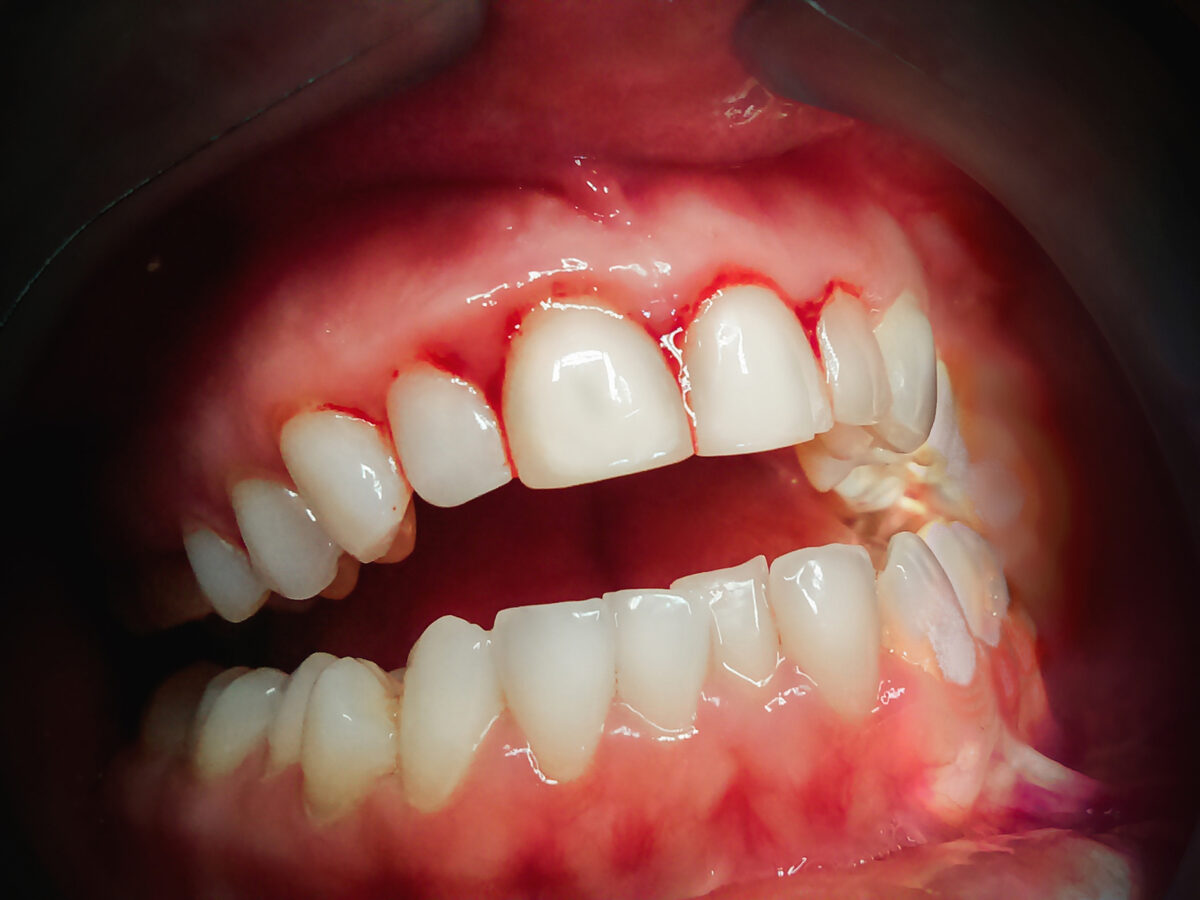Blog
Dental hygiene tips for healthy teeth & gums

Why Do My Gums Bleed When I Floss?
When you floss, do you notice any bleeding? If that’s the case, it’s not time to slow down. As contradictory as it may sound when you bleed during flossing, it usually means you need to do it more often. Despite appearances to the contrary, the bleeding will stop once you’ve flossed properly for a while.
Gum disease (gingivitis) or inflammation can cause bleeding gums when flossing. If you want to know whether you need to schedule an appointment with the dentist, read on!
Things to keep in mind while flossing
Flossing should be continued unless there is an issue or physical injury to the gum tissue. Within 3-10 days, the bleeding ought to have ceased. If a patient experiences bleeding when flossing, they are likely to cease doing so. If you see any bleeding when flossing, you should increase the frequency of cleaning that area.
Then you should visit the dentist. After 7-10 days of flossing, if you are still experiencing bleeding gums, it is recommended that you visit a dental hygienist. Discuss your flossing habits with your dental hygienist so she can determine if your gums need treatment—specialists in gum disease.
Reasons for blessings while flossing
Flossing can cause bleeding gums for a variety of reasons:
- Poor restoration of a filling or crown might allow bacteria to accumulate, irritating the gums.
- Your flossing practices may need to be better.
- When you brush your teeth, focus on the gums as well.
- Your teeth may have a hard buildup called tartar (calculus).
- Many plaque and tartar have accumulated on your teeth, and you just had a cleaning.
When is the best time to floss?
You need to floss to clean between teeth, where toothbrushes can’t reach. With flossing, you can see almost half of your mouth’s surface. If you only floss occasionally, you may experience bleeding gums. Your interdental tissue has never been activated before. Regular flossing strengthens the gum tissue in that area, so it no longer bleeds when cleaned.
It advises patients to floss at least once every day. It’s recommended to floss right before night, right before you brush your teeth. This maximizes the area of your teeth exposed to the fluoride in your toothpaste. If you notice bleeding gums after flossing, try to floss after every meal for 3-10 days.
How exactly should one floss their teeth?
Floss is not the same thing as a toothpick. Yes, it can help remove debris above the gum triangle between your teeth. However, flossing aims to eliminate the sticky plaque that forms in the crevice between the tooth and the gum. To accomplish this:
- Use the floss to reach the bottom of the triangle-shaped space between each tooth. Floss as deeply as you can without cutting your gums.
- To properly floss, you should move the floss from cheek to tongue as you push it between your teeth. Don’t hurt your gums by snapping the floss. This is what makes the incisions in the gums. Put the floss where your tooth meets your gum.
- Gently scrape the floss against the teeth and then up and outward in a straight line. Treat each tooth independently, twice on each side. Like flossing, brushing your teeth is a simple task that can be done correctly or incorrectly.
Wrapping Up
When you clean your teeth, be sure to floss your gums gently. Focus on the spaces between teeth and gums by brushing them with half of the bristles and the teeth with the other half. Ensure you get the area behind your back teeth every time you brush. It’s normal for gums to feel tender and bleed a little when brushing properly. In a week or two, you should notice a decrease in bleeding.
